
I am so sad to be the bearer of bad news: earlier this week, Risasi lost one of her beautiful cheetah cubs that we’ve all come to love. Park rangers found the cub's body on Monday with no visible signs of injury. There is a high chance that it was a snake bite which could have taken just a few hours if not minutes for it to succumb.
Cheetahs face a lot of danger, chiefly lions looking to take out any future competition, but in this case, the likelihood of a lion being involved is fairly low since the body was intact. If a lion was responsible for the death, the body would have likely been mutilated.
Risasi may be mourning the lost cub — it was reported she and the remaining three were seen circling the body the following day — but she continues to care for the remaining three cubs and we’re all rooting for their survival. We also spotted her hunting another baby Thompson gazelle and, as usual, her speed is something to marvel at.
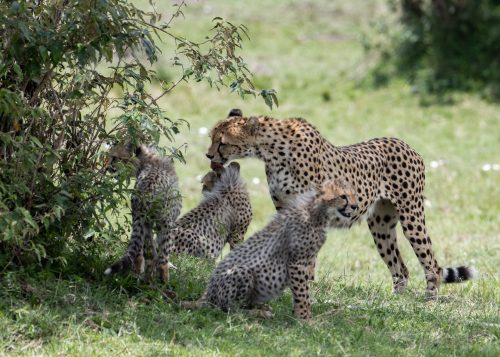
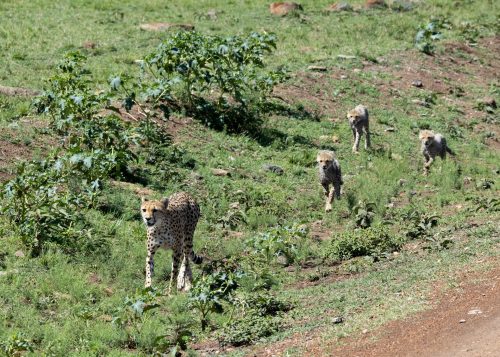
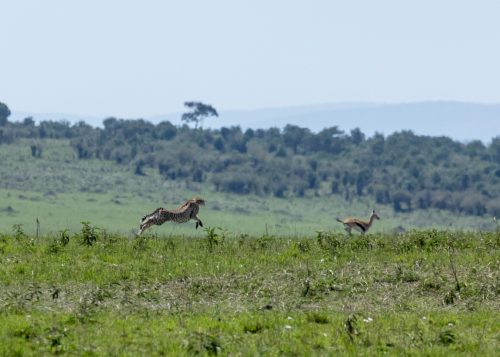
Wilson with his good luck came into the studio this week with a grin visible from a mile away. Not from a giraffe giving birth this time, but a very dramatic sighting he had witnessed. It's not every day you see raptors fighting over food, and by food, I mean a very cute innocent-looking hare — but I'm not about to turn this story into another sad one.

Secretary birds and tawny eagles belong to an order of birds known as Accipitriformers, these are birds of prey that are mainly active during the day (diurnal) and if you’re lucky you might just see them hunt. Wilson and some of our guests were treated to an eagle vs secretary bird showdown. At first, the secretary bird was chasing a hare which turned out to be a tough catch until the tawny eagle showed up. It seems the eagle was flying by and happened to see the secretary bird struggling to catch the hare and swooped in.
Eagles are prolific hunters and once they lock their eyes on a target, it’s game on. They descend at such incredible speeds that when they land on prey with their powerful talons they inflict a vice-like killing grip. But in this case, the secretary bird wouldn't let go of its meal without a fight. They exchanged a few blows but the secretary bird’s long legs gave it an advantage. Eventually, the eagle flew away having nearly killed the hare, making the secretary bird’s job a lot easier.
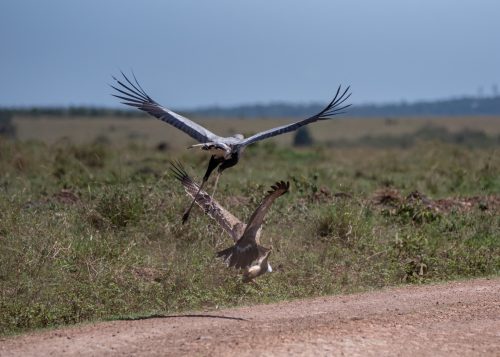

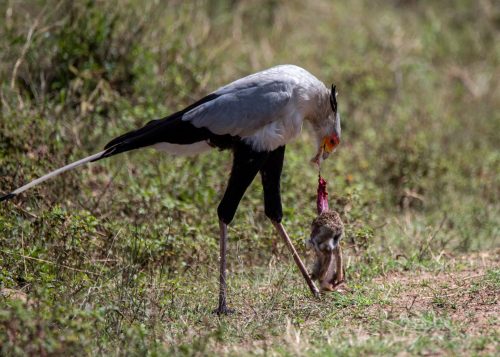
Towards the south of the Triangle along the Oloololo Escarpment is a fairly solitary part of the Mara, beautifully scenic and quite quiet. I was slowly scanning when I came across this large bird with a whitish chest and black back, nicely perched on a tree. It was an augur buzzard, a fairly sizeable African bird of prey. These birds are residents with sporadic nomadism linked to prey availability. The augur buzzard mainly eats reptiles, supplemented with small ground mammals and insects, doing most of its hunting from a perch. I was lucky enough to see it hunt for breakfast — what a beauty in flight! It plunged to the ground before grabbing a small snake which it gently devoured.
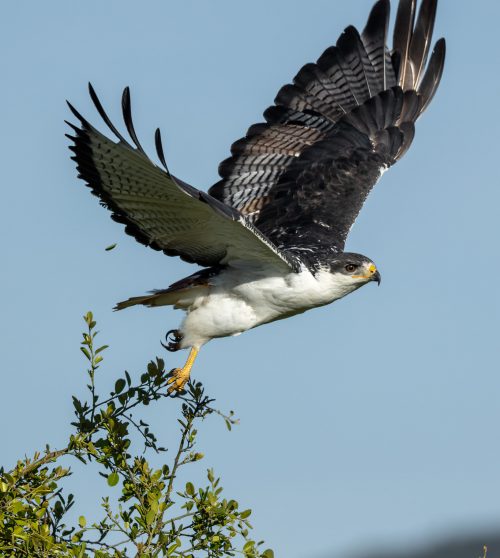


The River Pride showed up after a few days of being missing in action. This pride operates in a thick canopy along the Mara River and most times it’s fairly hard to spot them. They usually have a taste for buffalo and zebra but this week we heard from the rangers that they had downed a hippo. Tito, another member of Angama's guiding team, caught up with them as they basked in a post-meal stupor in the afternoon sun.

There’s a new guy in town — well, not entirely new as he has been spotted in the Triangle before. But not much is known about this male cheetah apart from that he’s a nomad operating between the Triangle and the Serengeti. When he is around, he likes to hunt young topis moving around a lot. We caught up with him this week at the balloon landing area but he didn’t seem interested in our company so he ran for cover just after I grabbed a few shots of him. We are keen to keep up with this interloper and see what stories unfold.


The Mara has continued to receive a fair amount of rainfall and it's becoming more and more colourful by the day. We have also been treated to lovely sightings of some of the 'less celebrated' birds and reptiles. None more so bewildering than a snake... with... legs?
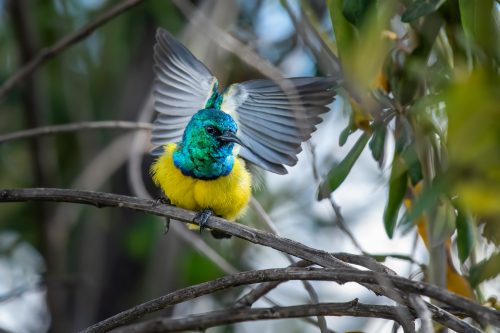

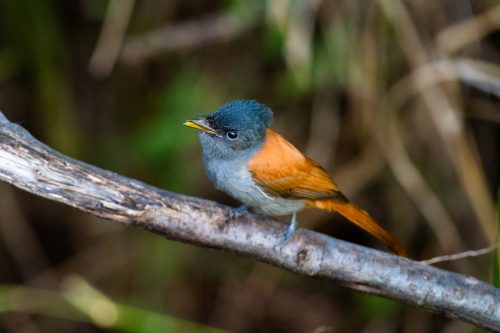
Not a snake at all, but a Western Serpentiform skink. On closer inspection, Robert, my colleague from the Photographic Studio, found four near-useless legs and a notched tongue (rather than forked) classifying it in the lizard family, rather than the snake one. A truly rare sighting, this skink has only been photographed a few times and was previously thought to be extinct.
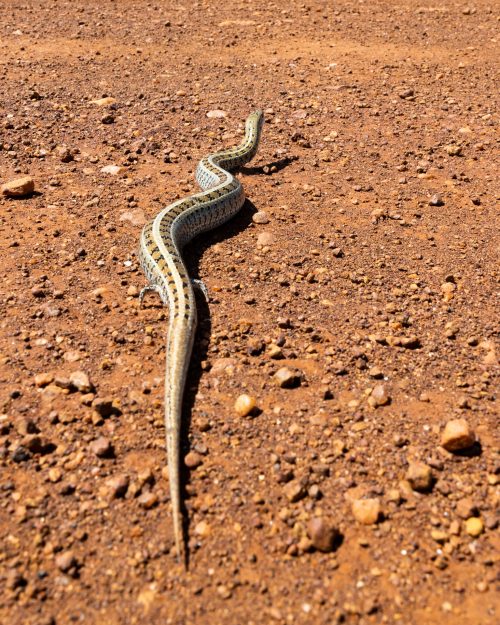

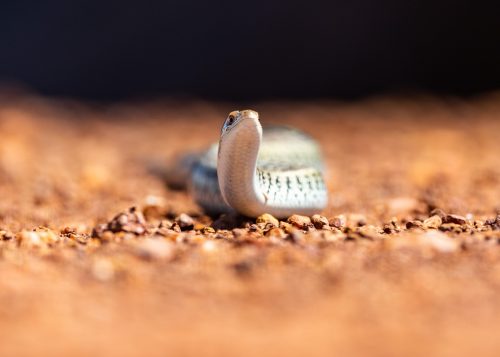
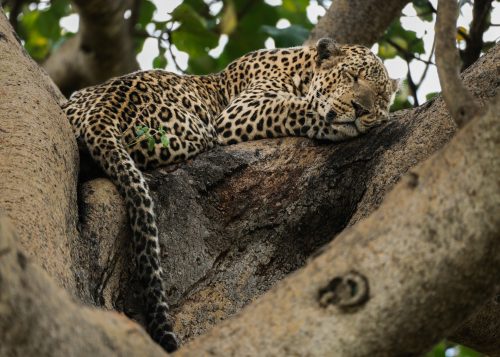
The Shepherd Tree Male closed off the blog this time last year as he slept peacefully in the branched of Steve’s Fig Tree — a very special spot for the Mara Triangle and the Angama family — as the skies opened around him.
Filed under: This Week at Angama
Subscribe for Weekly Stories
Comments (0):
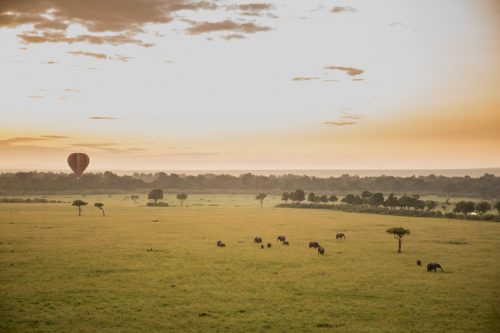
Hot-air Ballooning